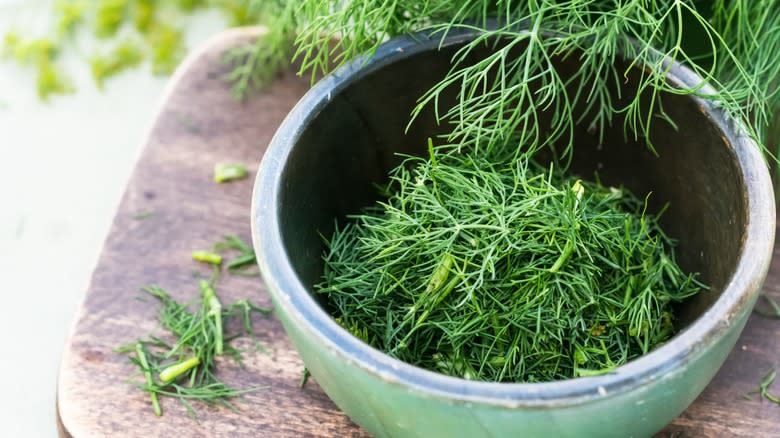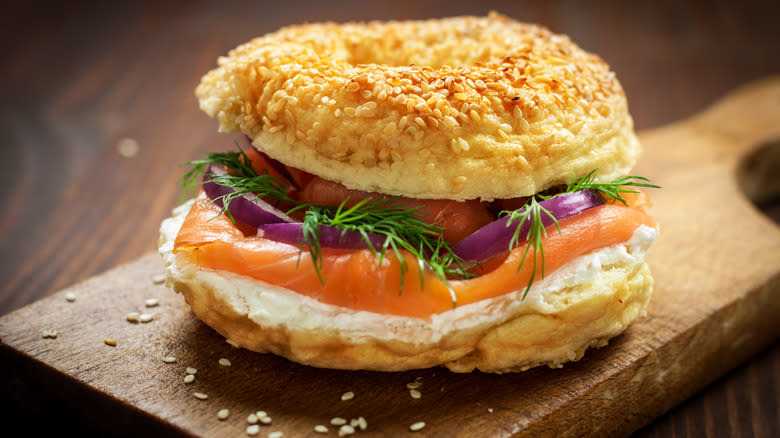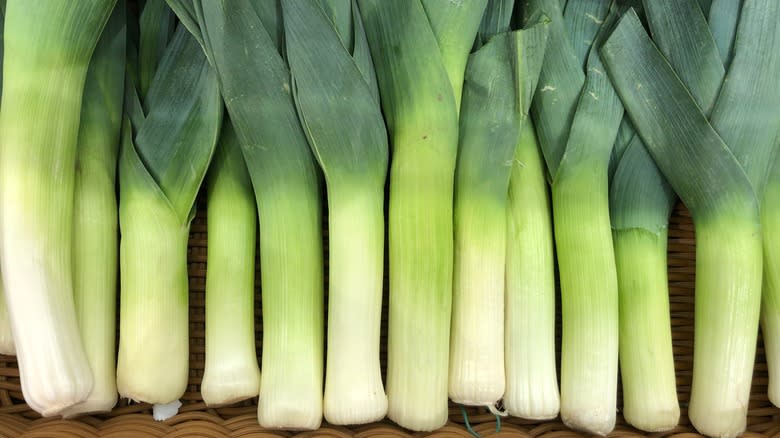The Subtle Differences Between Dill And Dill Weed

When considering dill versus dill weed, people usually know these refer to the same plant, but they're not exactly the same thing. This can be confusing when following recipes or out shopping for groceries, so it's helpful to know a little bit about this interesting plant to help you distinguish between its different parts and their characteristics.
Dill is an ancient plant that comes from southeastern Europe and southwestern Asia. Excluding the small roots, it has four parts: Seeds, leaves, stems, and flowers. Although mostly just the seeds and leaves are eaten, every part of the dill plant is edible! However, it's worth noting that once the flowers bloom the rest of the plant will become bitter. Dill weed, on the other hand, refers to only the leaves of the dill plant, and the edible stem tips connecting them. You may see the leaves sold fresh or dried under the name dill or dill weed, since 'weed' is added simply to prevent potential confusion with the dill seed.
The reason you may not want to confuse dill weed versus dill seed is that these two parts of the same plant have distinctive aromas, flavors, and culinary uses. Dill is from a plant family of aromatic heavy hitters among which are coriander, parsley, and caraway. Its seeds have an aroma and flavor that fits into this group: Intense, fresh, and slightly similar to caraway seed, while dill weed's flavor is milder, grassy, and anise-tasting, more like fennel.
Read more: 11 Of The Best Cooking Tips From Bobby Flay
Making The Most Of Dill

Dill weed (the leaves) is the most commonly used part of dill. You can use them fresh or dried, but for many recipes dried will be equally effective as fresh, so you may prefer to use dried dill weed as it will last much longer when properly stored at home. It's easier than you think to dry fresh plants like dill weed in the open air, your oven, or even your microwave.
Dill weed works especially well with fish; you'll often find a recipe for baked salmon calling for dill, and it's also commonly used in cures and marinades. It can work well with milder meats like chicken and pork, too, but it's really hard to beat a smoked salmon and cream cheese bagel with a fragrant lift from some dill weed. That's because dill works wonderfully not only with fish but also with creamy or dairy-based products like cream cheese. Many a potato salad recipe uses dill for this reason.
Another common use for dill weed is in pickling. The most common example of this is dill pickles, which are cucumbers pickled with plenty of dill, hence their name. Although, dill to pickle almost anything, like dill pickled green beans, for example. The seeds are often used in pickling too, but they can also be used to add atoms to soups and stews, included in a meat rub, and you can even add them to bread dough to make a dilly bread.
Other Plants With Different Tasting Parts

Just as with dill versus dill weed, many other plants have edible parts with subtle differences. Perhaps most similar to dill is fennel, which is overall less potent, but has the substantial benefit of a bulbous edible stalk which is the most commonly consumed part. Fennel fronds can be used similarly to dill weed, and their similar, fragile appearance makes small leaves of either work as a decorative garnish on dishes where dill has been used.
Celery, another part of the Apiaceae family with dill, is best known for its long, watery, and somewhat stringy stalks, but just like dill versus dill weed, celery has celery leaves. which are edible and fragrant. These are often thrown away, but they're highly nutritious, edible, and fragrant, so there are plenty of reasons why you should start adding celery leaves to your salad. Carrot tops are also edible and have a mild bitter taste which makes them salad-worthy, too, and the same goes for beet leaves.
Leeks have a clear distinction in the green leaves which change color as they move down to a white bulb. These two different parts can be used slightly differently: The white part of the leek is versatile and commonly used, but the green part is often thrown away and is also edible. It's tough though, so requires boiling before it can be put to good work in dishes like soups or casseroles, or served as a side.
Read the original article on Daily Meal.